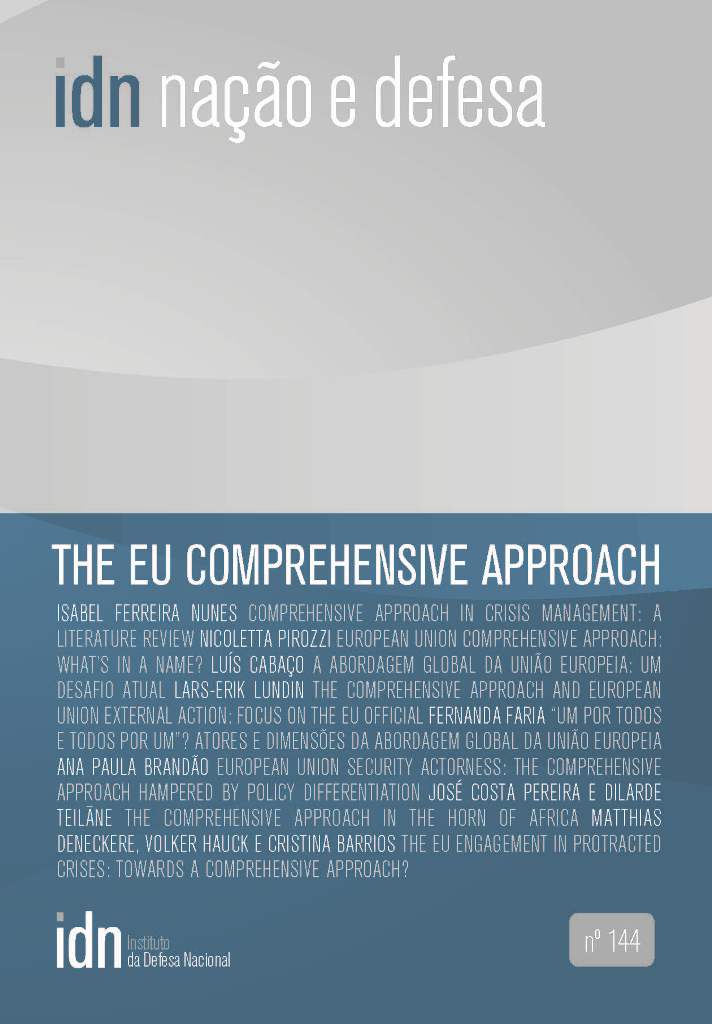European Union Comprehensive Approach
What’s in a Name?
Resumo
The article departs from the idea that the concept of comprehensive approach was adopted as an EU distinctive characteristic in managing crises. The new institutional context given by the Treaty of Lisbon and the growing number and complexity of the global challenges to be addressed by the EU contributed greatly to its operationalization. At the conceptual level, the scope and aim of the EU’s comprehensive approach have been partially defined by a Joint Communication adopted in 2013 and further clarification has been added in the new EU Global Strategy, presented by the High Representative at the European Council of June 2016. Nevertheless, important divergences among Member States, as well as institutional divides and operational obstacles still hamper its effective implementation. This article aims at analyzing the inception, evolution and current perspectives of the EU’s comprehensive approach, with a view to feed the ongoing debate in the EU’s institutions and among the experts’ community. The first part offers an overview of the development of this concept from the adoption of the European Security Strategy (ESS) to the entry into force of the Lisbon Treaty and the adoption of the European Commission/High Representative’s Joint Communication. It is followed by an assessment of the efforts and gaps towards its operationalization, looking in particular at the cases of capacity building in security and development, joint programming in development cooperation and migration. It concludes with a flare on the way ahead following the presentation of the EU Global Strategy.





